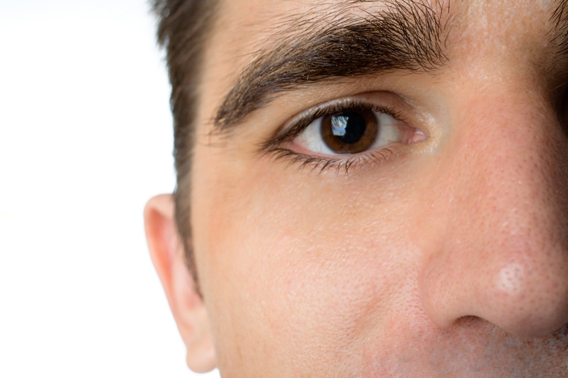Eye of the Beholder
Study shows that "gaydar," like other snap judgments, is more often right than wrong
By Marjorie Howard
Conventional wisdom may tell us not to make snap judgments about people, but a new study shows that in some cases, you can, indeed, judge a book by its cover. In fact, says Nicholas Rule, a graduate student in psychology and lead author of the study, "you can tell a lot more about people than you think you can" after only a lightning-quick look at someone's features.

Hair style and other obvious aspects of appearance are processed consciously, researchers say, but subtle cues that leak through in the eyes and mouth are processed unconsciously. Photo: iStockphoto
Case in point: "gaydar," the idea that people can tell whether someone is gay or straight simply by looking at them. Rule and Nalini Ambady, a professor of psychology, took photographs from personal ads on the Internet of men who identified themselves as gay or straight. In some cases they showed test subjects the entire photo, in others only the eyes or mouth or hair in the photo.
They found that in one-twentieth of a second, viewers could tell whether the men were gay or straight about 60 percent of the time. All the test subjects were accurate 55 to 70 percent of the time.
"Their accuracy was above it just being chance," says Rule. "What we think are cues like hair style or clothing and obvious aspects of appearance are processed consciously. But subtle cues that leak through in the eyes and mouth are processed unconsciously."
Interestingly, says Rule, accuracy doesn't improve with more time. "People were just as good with a 20th of a second as they were with 10 seconds."
The study was published in the July issue of the Journal of Experimental Social Psychology.
Ambady is known for her work on what she calls "thin slices," the brief moments when we make judgments unconsciously. In tests, she showed viewers very brief video clips of, for example, teachers in a classroom and found that a subject's judgment of the teacher correlated significantly with written evaluations teachers received at the end of the term from students in the class.
Ambady's work was included in a popular book Blink by Malcolm Gladwell, who wrote about how people make determinations about a variety of situations within two seconds, a concept he calls "rapid cognition."
Rule, who began doing research on snap judgments as an undergraduate at Dartmouth, has worked on other studies at Tufts. In one with Ambady, subjects looked at the faces of chief executive officers from Fortune 1000 companies and were asked to make judgments about personality traits and how good they thought the CEO was at leading the company. In the study, published in the February 2008 issue of Psychological Science, a journal of the Association for Psychological Science, Rule said they found the subjects' judgments of the executives' success had a high correlation to the profitability of the company.
Marjorie Howard may be reached at marjorie.howard@tufts.edu.


